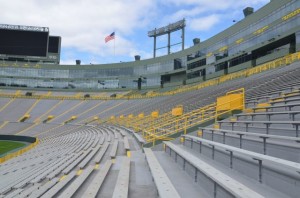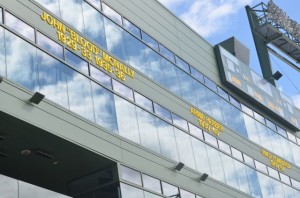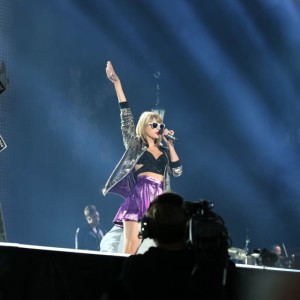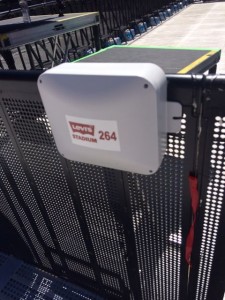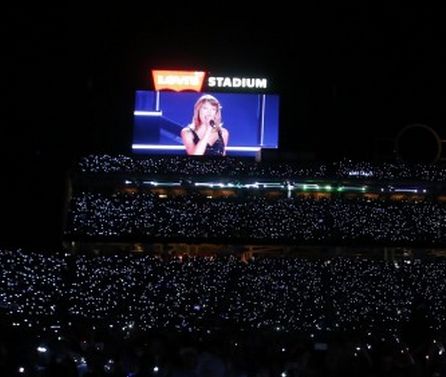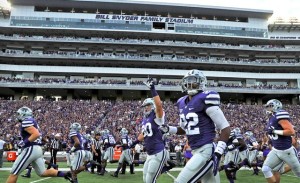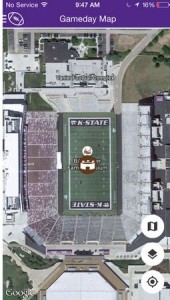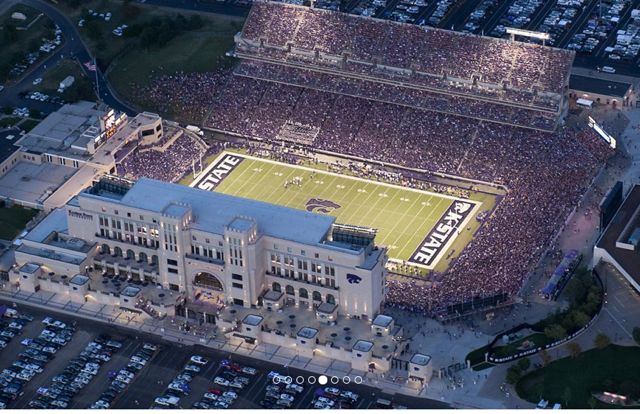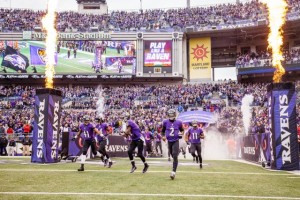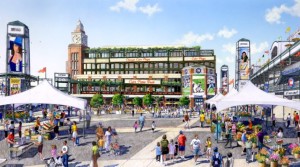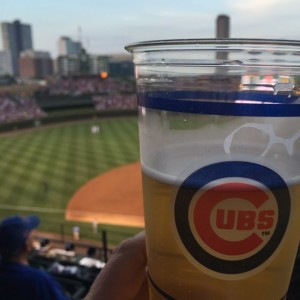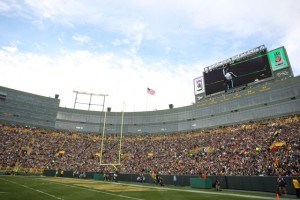
Lambeau Field, home of the Green Bay Packers, now has Wi-Fi for fans. All photos: Green Bay Packers (click on any photo for a larger image)
Much like the deployment last year at the Seattle Seahawks’ CenturyLink Field, the Lambeau network will be ready for this season’s games and will feature separate Wi-Fi SSIDs for Verizon customers and for all other subscribers, according to the Packers and Extreme. The network, which was installed earlier this year, has approximately 1,000 access points in and around the venue, many on handrail enclosures to provide service to the large bowl seating areas where there are no adjacent overhangs.
According to the Packers, the network was live in a “testing” mode for some pre-football season events this summer, including a Kenny Chesney concert and the Brett Favre Packers Hall of Fame induction ceremony. Wayne Wichlacz, director of IT for the Packers, said the network wasn’t advertised at those events but was still found and used by fans in attendance.Like at other Extreme deployments, the Packers will put together a group of “Wi-Fi coaches,” network-savvy people who will roam the stands on game days to help fans connect. According to the Packers they will partner with and help train local high school children to be the “coaches,” a unique twist.
Green Bay is the second NFL franchise to announce a new network built by Extreme for the upcoming season, following the news of an Extreme network being installed at the Baltimore Ravens’ M&T Bank Stadium. By our unofficial count this is the eighth NFL stadium to get an Extreme Wi-Fi deployment.
Verizon, which does not comment publicly on its Wi-Fi deployments, has also backed Wi-Fi networks for NFL stadiums in Seattle and Detroit, as well as at the Staples Center in Los Angeles. If the Green Bay network is like Seattle’s, Verizon customers can set their devices to automatically connect to the Wi-Fi network when it is detected. There will be no extra charge for non-Verizon users at Lambeau, and again if the network works like Seattle’s there won’t be any difference in performance between Verizon and non-Verizon customers on the Wi-Fi network. Verizon also built the DAS at Lambeau, which was already operational prior to this season. It’s not known if other carriers are on the Verizon DAS or not.The deployment at Lambeau was no doubt a special challenge, given the historic nature of the venue and the lack of overhang space for APs for much of the bowl seating. Look for a more detailed profile of the network deployment in our upcoming Stadium Tech Report next month!
